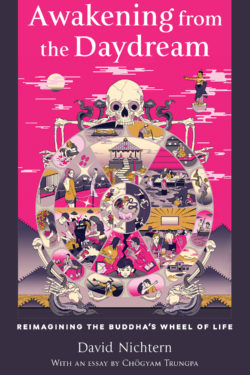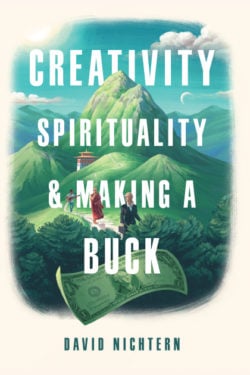David Nichtern

David Nichtern is a senior teacher in the lineage of renowned Tibetan Buddhist meditation master Chogyam Trungpa Rinpoche. David was one of the initial American students of Trungpa Rinpoche and studied closely with him soon after his arrival in the United States in 1970. David has been co-director of the Dharmadhatu Meditation Center (LA) and the Karme Choling Meditation Center (Vermont), as well as Director of Buddhist Practice and Study for OM Yoga (NYC) His work has been featured at The Huffington Post, and he leads meditation workshops around the world and online. David Nichtern is also a well-known composer, producer, and guitarist. A four-time Emmy winner and a two-time Grammy nominee, he is the founder of Dharma Moon and 5 Points Records. David has recorded and played with Stevie Wonder, Jerry Garcia, Lana Del Rey, Maria Muldaur, Paul Simon, and many others, and has also produced multiple records for and toured with Grammy-nominated kirtan performer Krishna Das.
Books, Courses & Podcasts
Awakening from the Daydream
“Traditionally in Buddhism, these six realms are viewed as actual, objective destinies into which one can be born, but Nichtern focuses on them as psychological and emotional states that we cycle through over the course of a lifetime, and maybe even over the course of a day or an hour. Unpacking these six states of mind and their emotional foundation, he shows us how we can use the Wheel of Life teachings, in combination with meditation practice, as a path to self-awareness and emotional freedom.”
—Lion’s Roar
In Awakening from the Daydream, meditation teacher David Nichtern reimagines the ancient Buddhist allegory of the Wheel of Life. Famously painted at the entryway to Buddhist monasteries, the Wheel of Life encapsulates the entirety of the human situation. In the image of the Wheel we find a teaching about how to make sense of life and how to find peace within an uncertain world.
Nichtern writes with clarity and humor, speaking to our contemporary society and its concerns and providing simple practical steps for building a mindful, compassionate, and liberating approach to living.
Creativity, Spirituality, and Making a Buck
“How do I make a living doing what I love?”
“Am I a sellout as an artist if I want to be successful?”
“How do I integrate my spiritual principles with the art of running a business? And actually, um, how do I run a business?”
Are you struggling to reconcile your calling with your need to make a living wage? Are you wondering what to do once your art starts selling, or how to achieve success in your field, or what it even means to be successful?
In Creativity, Spirituality, and Making a Buck, David Nichtern—a beloved Buddhist teacher and successful musician, composer, and producer who has worked with the likes of Paul Simon, Stevie Wonder, Jerry Garcia, and Lana Del Rey—offers his lived, learned experience as an entrepreneur, musician, and Buddhist teacher to first help you figure out what “success” means to you and then show you how to get there. If you’re trying to align your spiritual, creative, and financial pursuits and discover what it means to truly live well, this book is for you.
“Everybody has a hungry heart. We are hungry for so many different kinds of food. The table is set and the meal is laid out for us…but how do we put that food into our mouths and TASTE IT? In this book, David Nichtern guides us with wisdom, joy, and humor to make our whole lives a tasty meal to be enjoyed and shared with others.”—Krishna Das, author of Chants of a Lifetime and Grammy-nominated kirtan artist


